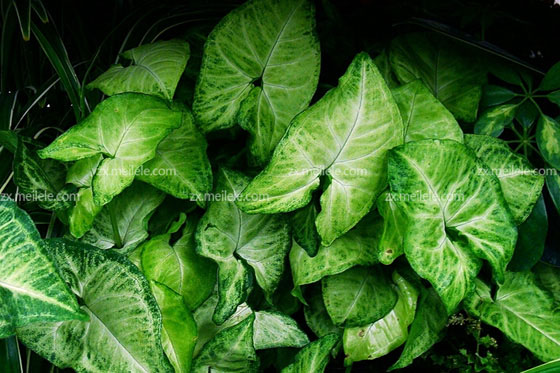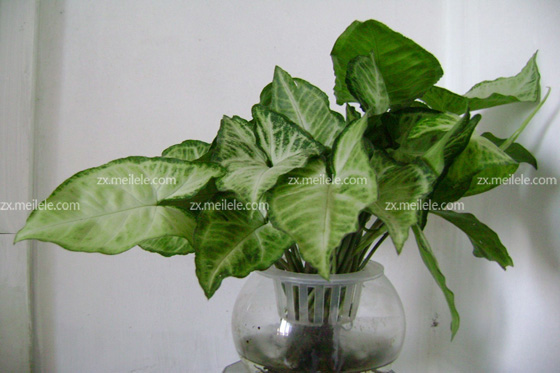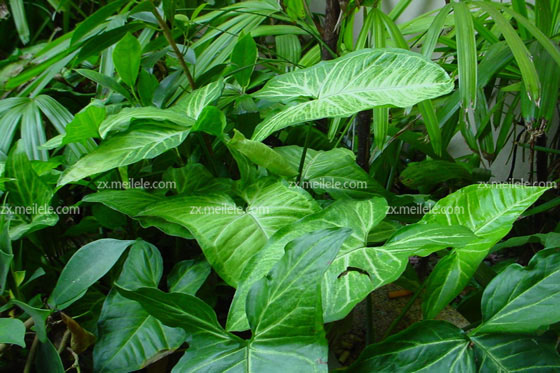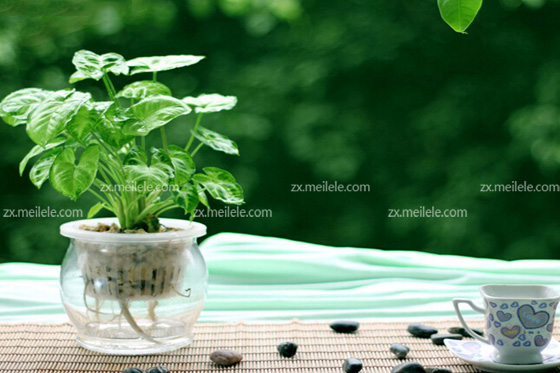Is the culture method of taro poisonous?
For today's ornamental plants, many people prefer to cultivate leafy plants that want to be higher and larger. Because this kind of plant is better farmed. Among many foliage plants, taro is one of them. It is a perennial evergreen herb of Araceae, native to meta-tropical America. Today, let's learn about the culture method of taro and the introduction of whether it is poisonous or not.

Introduction of fruit taro
Taro is a perennial vine evergreen herb, which is a kind of foliage plant widely cultivated all over the world. The stem nodes of taro have aerial roots and grow on other things. The leaves are dimorphic, and the young leaves are simple, arrow-shaped or hastate-shaped; the old leaves are 5-9-lobed palmate leaves, the middle one is large, and small auriculate leaves often occur on both sides of the basal lobes. The primary leaves are light, the old leaves are dark green, and the leaves are thickened. The Buddha's bud is light green or yellow. There are two kinds of taro, one is white butterfly taro and green gold taro, the leaves of white butterfly taro are tufted, shield-shaped, butterfly wing-shaped, the leaf surface is mostly yellow and white, the edge has green patches and stripes, and the petiole is longer. The stem nodes are short. The leaves of green and golden taro are tender green, with yellow-white markings in the center, longer internodes and aerial roots in stem nodes.

Introduction to the culture method of synthetic taro
1. Lighting: taro has a strong adaptability to light and likes astigmatism, but when the sun is too strong, the edge of its leaves will wither and yellow, and if the light is too dark, it will make the leaves have no light. In winter, there is no need to shade it. If you are in the position of lack of light for a long time, the leaves will grow crazily and the pattern will fade quickly.
2. Watering: taro is a plant that likes to be moist and afraid of drought. in summer, it should be watered adequately and keep the basin soil moist, which is beneficial to its stem growth. In winter, the watering of taro should be reduced, and its potted soil should not be too wet, otherwise it is easy to cause root rot and leaf withering in low temperature environment.
Temperature: synthetic taro is not resistant to cold, like high temperature and high humidity environment, generally its growth temperature is 20-30 degrees, in winter, can not be lower than 15 degrees.
4. Fertilization: under bright light, thin fertilizer water should be applied to the taro every two weeks, and 0.2% solution should be sprayed once a month. In winter, the fruit taro needs to be fertilized.
5. Soil: Amorphophallus likes the slightly acidic soil with high temperature and humidity, loose and fertile soil and good drainage. It's going on. When potted, it can be planted with a mixture of rotten leaf soil, peat soil and coarse sand. At the same time, synthetic taro is also very suitable for soilless cultivation.

Is the taro poisonous?
Amorphophallus, also known as Arrow Leaf Taro, is a plant of the genus Araceae. And Araceae plants contain toxins, especially its juice and dripping water and rhizomes are poisonous. If you accidentally eat or eat its juice, it will cause discomfort in the pharynx and mouth, and in serious cases will suffocate, resulting in heart paralysis and death. Skin contact with its juice will cause itching or strong irritation, eye contact with juice can cause severe conjunctivitis, or even blindness, so it is necessary to minimize contact with taro when breeding, and it is best not to plant it if you have children.

Conclusion: because of its easy reproduction, easy cultivation, especially shade tolerance and excellent decorative effect, it is widely used all over the world. The above is the introduction of the method of culturing taro and whether it is poisonous or not. after reading the introduction of the editor, I believe you also have a certain understanding.
- Prev

A complete collection of pictures of ivy, the culture method of ivy
A complete collection of pictures of ivy, the culture method of ivy
- Next

The culture method of five-color plum and the appreciation of pictures of five-color plum
The culture method of five-color plum and the appreciation of pictures of five-color plum
Related
- Wuhan Hospital Iron Tree Blooming Result Was Instantly Frightened by the Gardener Master
- Which variety of camellia is the most fragrant and best? Which one do you like best?
- What is the small blue coat, the breeding methods and matters needing attention of the succulent plant
- Dormancy time and maintenance management of succulent plants during dormancy
- Minas succulent how to raise, Minas succulent plant pictures
- What are the varieties of winter succulent plants
- How to raise succulent plants in twelve rolls? let's take a look at some experience of breeding twelve rolls.
- Attention should be paid to water control for succulent plants during dormant period (winter and summer)
- Watering experience of twelve rolls of succulent plants
- Techniques for fertilizing succulent plants. An article will let you know how to fertilize succulent plants.

